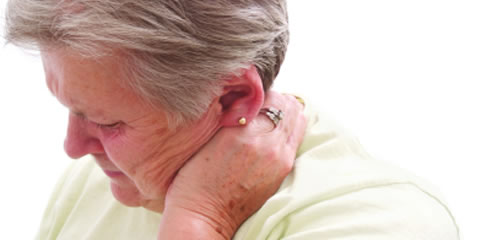
|
|
|
Call our offices at: (310) 274-3481 (800) 964-0404
Beverly Hills
9301 Wilshire Boulevard
Suite 406A
Beverly Hills, California 90210

|
|
 |
|
|
INSURANCE & WORKERS' COMPENSATION
ACCEPTED!
We accept most types of
insurance
providers and specialize in the treatment of
workers' compensation injuries to the hand and upper extremity. |
|
 |
|
Pain Syndromes
Fibromyalgia
Rheumatoid Arthritis
Systemic Lupus Erythematosus
Scleroderma
Polymyositis / Myofascial Pain Syndrome
Cancer Pain
Multiple Sclerosis
Polymyalgia Rheumatica
Central Pain States
Chronic Fatigue Syndrome
Conversion Disorder
Munchausen Syndrome
Chronic pain disorders and autoimmune diseases can be very difficult to treat and diagnose. These disorders can cause much discomfort in patients and can be very disabling, however, with proper treatment and specific care, these diseases and disorders can be controlled and patients can live a more normal life. Due to the fact that these disorders and diseases do not have a cure, proper treatment is essential. Treatment is highly specific to each individual patient due to the variability and severity of the symptoms and focus on delaying progression, decreasing inflammation, and providing relief. At Avosant Surgical Associates, our highly qualified board certified physicians are skilled and knowledgeable in the treatment of these conditions. Listed below are some chronic pain disorders and autoimmune diseases that affect the lives of many patients.

Fibromyalgia
Fibromyalgia is a chronic pain syndrome characterized by widespread pain throughout the body with accompanied fatigue, sleep disturbances, and painful “ trigger points”, defined as specific points on the body that become painful with direct pressure. These trigger points are most often located on the back of the head, between the shoulder blades and top of the shoulders, on the front side of the neck, upper chest, outer elbows, upper hips, sides of the hips, and inner knees. The pain associated with fibromyalgia is said to be a constant dull ache, mostly of the muscles, and shooting pains. The pain and stiffness associated with fibromyalgia is often worse in the morning and is aggravated by cold, humid weather, lack of sleep, physical and mental fatigue, psychological problems, excessive physical activity, and physical inactivity. The cause of fibromyalgia is unknown. Treatment for fibromyalgia includes drug therapies, lidocaine injections in the trigger points, physical therapy, and multidisciplinary modalities such as acupuncture and sleep management.
Rheumatoid Arthritis
Rheumatoid arthritis is an autoimmune disorder : where the affected individual’s immune system mistakenly attacks its own bodily organs and tissues. It is a connective tissue disease that causes chronic inflammation of the joints, most commonly affecting the wrists, knees, ankles, fingers, and bones of the feet, however, all joints are susceptible. Some common symptoms of rheumatoid arthritis include morning stiffness, deformities of the affected joints, painless bumps of tissue that appear under the skin (rheumatoid nodules), joint pain, swelling, and tenderness, fever, weight loss, fatigue, and red, puffy hands or knees. The cause of rheumatoid arthritis is unknown, but a genetic predisposition is apparent. Treatment for rheumatoid arthritis focuses on resting and protecting or splinting the affected joints and treatment of the inflammation. Because there is no complete cure for the disease, successful treatment involves controlling and minimizing the inflammatory process and preventing further complications through medical or surgical management. Proper and aggressive treatment of the inflammatory response associated with rheumatoid arthritis requires careful and highly skilled administration of the drug therapies by a very qualified specialist.
Systemic Lupus Erythematosus
Systemic lupus erythematosus is a chronic, inflammatory connective tissue disease that affects mostly women of African American and Asian descendant. Systemic lupus erythematosus affects the joints, skin, blood vessels, and major organs with the potential to have very painful and debilitating effects. Systemic lupus erythematosus or SLE can present and manifest itself in a wide spectrum of signs and symptoms ranging from a mild, non-progressive disease to an aggressive disease affecting many organs and body systems with the potential to be life threatening. Symptoms can range from fever-like illness with joint pain and skin rash, multiple joint pains and arthritis, mouth ulcers, and hair loss (alopecia). Because there is no complete cure for lupus erythematosus, treatment is purely aimed at controlling inflammation, relieving symptoms, and preventing further complications. Many patients are found to enter remission with expert medical attention. For patients suffering from mild systemic lupus erythematosus, characterized by having fever, joint pain, headache, rash and mild pericarditis, treatment involves the use of nonsteroidal anti-inflammatory drugs and possibly the use of antimalarial drugs if dermatologic or joint pains remain problematic. For patients suffering from severe systemic lupus erythematosus, characterized by having any and all symptoms that affect the major body systems, treatment involves controlling and suppressing the auto-immune and inflammatory responses with the use of corticosteroids and immunosuppressive therapies. Treatment of both mild and severe systemic lupus erythematosus requires careful, aggressive, and highly skilled administration of drug therapies by a rheumatologist.
Scleroderma
Scleroderma is an autoimmune disease of the connective tissue that is characterized by the formation of scar tissue of the skin and connective tissue, arthritis, vascular damage, and abnormalities of the heart, gastrointestinal tract, esophagus, kidneys, and lungs. Scleroderma or systemic sclerosis can manifest locally to the skin or a single organ or may cause severe multi-system disease. Scleroderma occurs more frequently in women and the onset of the disease is usually between the ages of 30 and 50. The cause is generally unknown. The symptoms of scleroderma can be very subtle and manifest gradually with potentially very harmful effects. Most patients suffering from scleroderma initially complain of pain and a tightening deformity of the fingers, multiple joint pains, and often difficulty swallowing. As the disease progresses, patients complain of skin changes commonly affecting the fingers, feet, face, and neck causing the skin to look shiny, swollen, and tight. Hyperpigmentation and the appearance of capillaries in the face, chest, lips and fingers is also prominent with calcification and ulceration of the fingers, elbows, ankles and knees. Scleroderma-systemic sclerosis can also cause esophageal, pulmonary, cardiac, and renal symptoms such as heartburn, pulmonary hypertension, cardiac arrhythmias, and kidney damage. Treatment for scleroderma is aimed at specific treatment of the different organ systems affected. This includes the use of different pharmacologic drug therapies that must be carefully monitored by a qualified internist or rheumatologist.
Polymyositis / Myofascial Pain Syndrome
 Polymyositis is an uncommon connective tissue disease that is characterized by muscle inflammation and weakness that progresses into degenerative muscle disease and atrophy with no specific cause. Polymyositis affects adult women more often than men between the ages of 40 and 60 years. Symptoms of polymyositis usually appear gradually and generally begin with signs of a viral infection, rash and muscle weakness most commonly affecting muscles of the hips, thighs, shoulders, upper arms, and neck. As polymyositis progresses, the muscle weakness can make it difficult to raise from a seated position to standing, lift objects, or reach over one’s head. In addition, polymyositis can cause difficulty swallowing and speaking, fatigue, shortness of breath, cardiac arrhythmias, and renal failure. Treatment for polymyositis includes the initial use of corticosteroids to suppress hyperactivity of the immune system and control the inflammatory responses, and physical and occupational therapy to help the patient return to functionality. In patients who do not respond to corticosteroids, immunosuppressive drug therapy may be required.
Polymyositis is an uncommon connective tissue disease that is characterized by muscle inflammation and weakness that progresses into degenerative muscle disease and atrophy with no specific cause. Polymyositis affects adult women more often than men between the ages of 40 and 60 years. Symptoms of polymyositis usually appear gradually and generally begin with signs of a viral infection, rash and muscle weakness most commonly affecting muscles of the hips, thighs, shoulders, upper arms, and neck. As polymyositis progresses, the muscle weakness can make it difficult to raise from a seated position to standing, lift objects, or reach over one’s head. In addition, polymyositis can cause difficulty swallowing and speaking, fatigue, shortness of breath, cardiac arrhythmias, and renal failure. Treatment for polymyositis includes the initial use of corticosteroids to suppress hyperactivity of the immune system and control the inflammatory responses, and physical and occupational therapy to help the patient return to functionality. In patients who do not respond to corticosteroids, immunosuppressive drug therapy may be required.
Cancer Pain
Pain is extremely common in cancer patients and can be caused by either the cancer itself or by the medical treatments. With proper diagnosis and monitoring, cancer pain can be managed. The diagnosis of cancer pain is made after a comprehensive and thorough assessment including a history and physical examination, general medical and neurological examination, and appropriate laboratory, electrodiagnostic, and/or radiographic procedures. Treatment of cancer pain is different for every patient and must be carefully monitored and planned by a highly qualified pain management specialist. For patients suffering from pain caused by cancer, the first line of pain management includes radiotherapy and chemotherapy along with the application of pain medications. For patients suffering from cancer pain caused by treatment, the use of three categories of pain killers may be implemented. These medications are nonsteroidal anti-inflammatory drugs, opioids, and adjuvant pain therapy agents. The application and administration of these drugs for the treatment of cancer pain must be monitored very closely by a qualified and experienced pain management specialist. Other forms of advanced therapy may also be required to treat pain through a multimodality approach and to help bring the patient back to a comfortable and functional state.
Multiple Sclerosis
Multiple sclerosis is a chronic disease that attacks the central nervous system. It is well described as a disease that can manifest neurologically at different times and different organs in the same individual. Multiple sclerosis is thought to be an autoimmune disease in which the body attacks the myelin, fatty sheath that protects and surrounds the nerve fibers in the central nervous system. The nerve fibers are also at risk of being damaged along with the myelin, causing scar tissue to form. When the nerve fibers or myelin is damaged, the nerve impulses are distorted or interrupted, producing a variety of symptoms. Multiple sclerosis is more commonly seen in Caucasian women than men, between the ages of 20 and 50 years. Some of the most common symptoms of multiple sclerosis include pain, numbness, muscle cramping and weakness, spasticity, bladder, bowel, and sexual dysfunction, vision problems, depression and emotional changes, dizziness, spinal cord dysfunction, fatigue, decreased cognitive function, and walking, balance, and coordination problems. Treatment of multiple sclerosis is based on the type of multiple sclerosis, the severity of symptoms, and the rate of progression. The use of disease modifying agents, corticosteroids, as well as physical and occupational therapy are modalities used to treat multiple sclerosis. A thorough, personalized, and guided treatment plan will be made by a highly qualified specialist for any person suffering from multiple sclerosis, because symptoms are highly variable from person to person.
Polymyalgia Rheumatica
Polymyalgia rheumatica is a connective tissue disease characterized by deep muscle aching, pain, and stiffness, primarily in the neck, shoulders, arms, thighs and hips. Polymyalgia rheumatica occurs more often in women than men over the age of 60. Patients suffering from polymyalgia rheumatica may experience symptoms all at once or a gradual onset. Symptoms of polymyalgia rheumatica include deep muscle aching, an overwhelming feeling of fatigue, unintentional weight loss, and stiffness after periods of inactivity. Treatment for polymyalgia rheumatica includes the use corticosteroids, such as prednisone, with relief being almost immediate.
Central Pain States
Central pain states is characterized as pain caused by a lesion or dysfunction in the central nervous system. Central pain occurs in people who have experienced spinal cord or brain injuries, tumor, multiple sclerosis, Parkinson’s disease, and epilepsy. The pain associated with central pain states is generalized as constant and burning in nature with intensity ranging from mild to severe. Patients also report allodynia (pain felt from a stimulus that normally does not cause pain), hypersensitivity, and dysesthesias (unpleasant, abnormal sense of touch). Treatment of central pain states is difficult, and pain management specialists can only provide partial relief of symptoms, therefore, most patients must undergo treatment that involve multiple modalities such as cognitive pain therapy and systematic desensitization that will be outlined and managed by the patients physician.
Chronic Fatigue Syndrome (CFS)
Chronic fatigue syndrome is a disorder defined by severe exhaustion that is not improved by sleep or rest. The cause of CFS is unknown, however theories range from viral infection to psychological stressors, and most commonly affects women in their 40s and 50s. Some of the symptoms associated with CFS are exhaustion, unsatisfying sleep, joint and muscle pain, headaches, sore throat, tenderness in lymph nodes, impaired memory, depression, irritability, and fluctuations in weight. Treatment can involve sleep modification, medication, stretching, massage therapy, and steady exercise.
Conversion Disorder
Conversion disorder is characterized as a somatoform disorder, where physical symptoms are present that mimic physical disease or injury with no identifiable cause. Patients suffering from conversion disorder will present with symptoms that are severe and have the ability of interfering with normal activities or allow the patient to avoid particular situations that are similar to those that caused the onset of the conversion disorder. The most common symptoms of conversion disorder are blindness, deafness, paralysis, weakness, inability to speak, tremors, and pseudoseizures which mimic epileptic seizures but are psychological in origin. Symptoms of conversion disorder are not under voluntary control and are purely subconscious in nature.
Munchausen Syndrome
Munchausen syndrome is a psychiatric disease in which a person repeatedly acts as if they are ill, when in fact, they have caused the symptoms and are completely aware that they are not ill and that there is no disease. Patients suffering from Munchausen syndrome will often lie or fake symptoms, hurt themselves to cause symptoms, or alter diagnostic tests. Patients with Munchausen syndrome act this way because of an inner need to be seen as ill or injured to gain sympathy and attention. These patients willingly undergo painful and risky tests and operations to fulfill this goal. The cause of Munchausen syndrome is unknown, however, researchers believe patients also suffer from a personality disorder. Munchausen syndrome is extremely hard to treat, and little evidence has been shown to support the effectiveness of antipsychotic drugs. A subset of Munchausen syndrome is Munchausen syndrome by proxy, characterized by a caregiver inducing illness in a patient to gain sympathy, attention, or other secondary benefits.

Top of the Page |
|